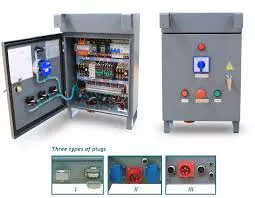The Importance of High Voltage Busbar Insulation Tape
High voltage applications require an array of safety measures to ensure optimal performance and protection. One crucial element in maintaining the integrity of electrical systems is the use of busbar insulation tape. This specialized tape plays a vital role in safeguarding equipment from potential electrical faults, and its significance cannot be overstated.
Understanding Busbars and Their Applications
Busbars are conductive materials, typically made of copper or aluminum, that distribute electrical power within substations, transformer stations, and industrial facilities. They serve as the backbone of electrical distribution systems, connecting different components while handling high currents. However, with high power comes a higher risk of electrical faults, making insulation an essential component in the overall safety of these systems.
The Role of Insulation Tape
High voltage busbar insulation tape is specifically designed to provide electrical insulation and protection against environmental factors. This tape is characterized by its excellent dielectric properties, which prevent electrical leakage and short circuits in high voltage systems. Moreover, it is engineered to withstand extreme temperatures, harsh chemicals, and mechanical stress, which makes it suitable for various industrial applications.
The insulation tape not only enhances the reliability of electrical connections but also helps in minimizing the risk of electric shocks. It serves as an effective barrier that ensures safety for both the equipment and personnel working in close proximity to high voltage systems. When applied properly, it prevents the degradation of busbars due to moisture, dust, and other contaminants.
Features to Consider
high voltage busbar insulation tape

When selecting a high voltage busbar insulation tape, several factors should be considered. The tape’s dielectric strength is paramount; it should have high resistance against electrical breakdown. Additionally, the thickness of the tape plays a critical role in providing adequate insulation without adding excessive bulk.
Adhesive properties are also important, as the tape must securely adhere to the surface of the busbar while maintaining its integrity under varying environmental conditions. Furthermore, the tape should be flexible enough to conform to different busbar geometries, ensuring comprehensive coverage.
Installation and Maintenance
Proper installation of the insulation tape is essential to achieve optimal performance. It is important to clean the surface of the busbar before applying the tape to ensure good adhesion. Wrapping the tape tightly and evenly around the busbar prevents gaps that could lead to electrical failures.
Regular maintenance checks should also be conducted to inspect the condition of the insulation tape. Any signs of wear, such as fraying or peeling, should be addressed immediately to prevent potential hazards.
Conclusion
In conclusion, high voltage busbar insulation tape is an indispensable component in ensuring the safety and efficiency of electrical distribution systems. Its unique properties offer robust protection against electrical faults and environmental challenges, making it essential for a range of industrial applications. By investing in high-quality insulation tape and following best practices in installation and maintenance, facilities can protect their infrastructure and enhance the safety of their operations. The importance of this simple yet effective tool highlights the need for careful consideration in high voltage system design and maintenance, thereby ensuring a reliable and safe electrical environment.
-
XIANGFAN Rubber Tape-Ultimate Solutions for All Your Insulation NeedsNewsJun.24,2025
-
XIANGFAN Rubber Tape-Protection for Industrial and Residential ApplicationsNewsJun.24,2025
-
XIANGFAN Rubber Tape: Superior Safety and Sealing for Demanding EnvironmentsNewsJun.24,2025
-
XIANGFAN Rubber Tape: Reliable Solutions for Every Electrical ChallengeNewsJun.24,2025
-
XIANGFAN Electrical & Industrial Tape: Powering Reliability Across IndustriesNewsJun.24,2025
-
XIANGFAN Electrical & Industrial Tape: Excellence in Every ApplicationNewsJun.24,2025
